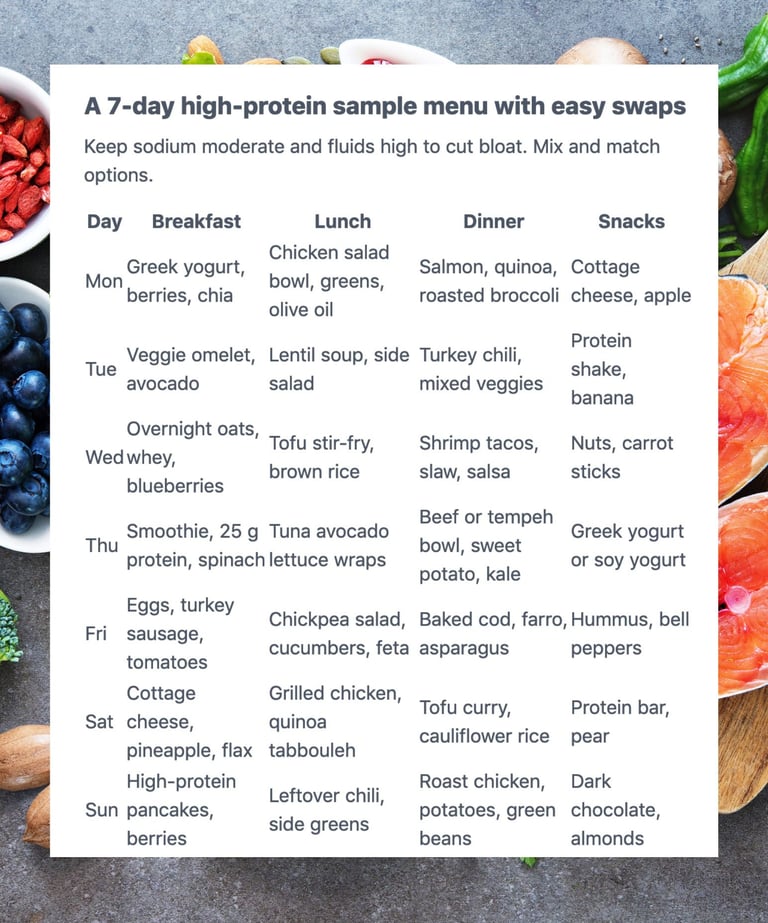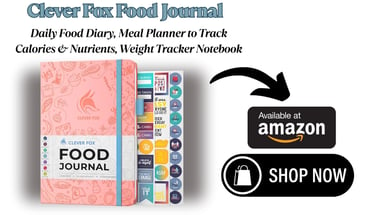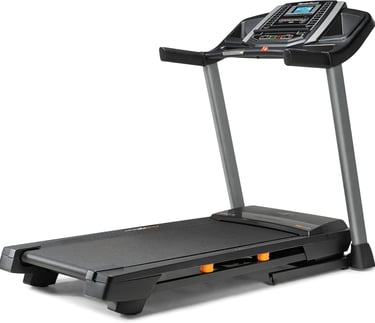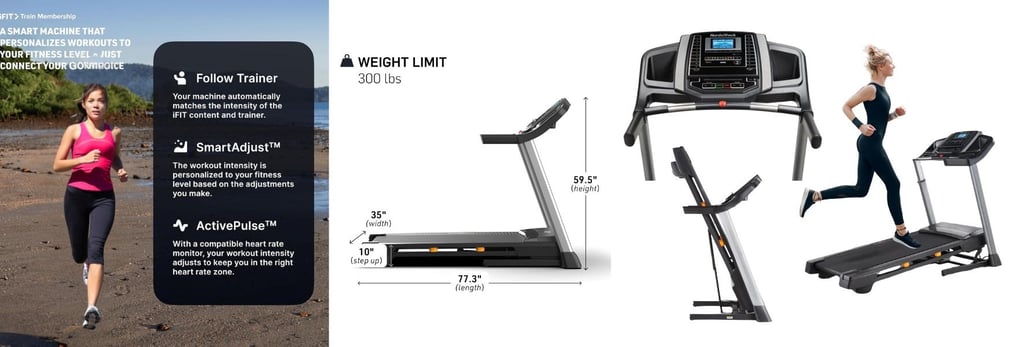What's the Absolute Fastest Way to Lose Weight: What Works Now
What's the Absolute Fastest Way to Lose Weight? See what works now with science-backed tactics, smart eating, strength, and sleep. Fast results, safe habits.
HEALTH & WELLNESS
Shari Smith
11/10/20256 min read
As an Amazon affiliate, we earn commissions at no extra cost to you if you click our links and make a purchase.


You want to lose weight fast, but you also want to feel good. Here is the truth you can use today for weight loss. The fastest safe path for weight loss focuses on fat loss, not just water weight. Most women drop water first, then settle into steady fat loss.
A safe, proven rate is about 1 to 2 pounds each week. Faster changes can happen early, especially with tight habits and sometimes medical supervision. Programs that build habits, like the Mayo Clinic Diet with its quick-start phase, help you move fast without crash dieting.
If you came here asking what's the absolute fastest way to lose weight, you will get a step-by-step weight loss plan for food, movement, sleep, stress, and when to consider supervised options.

If I Needed To Drop 25 Pounds FAST In 2025: Here's EXACTLY What I Would Do | Dr. Mindy Pelz
Watch Video...
What’s the absolute fastest way to lose weight without harming your health?
Use a smart calorie deficit that you can stick to. Eat high-protein, high-fiber whole foods. Move more every day. Lift weights to keep muscle. Sleep 7 to 9 hours. Manage stress on purpose.
Week one often brings a quick 2 to 6 pound drop, mostly from water and glycogen. After that, fat loss usually settles at 1 to 2 pounds per week for most women. Your speed depends on your hormones, age, sleep, stress, and schedule. Personalize the plan, track what works, and keep building wins.
Lose fat, not just water: what changes first in week one
Water leaves first when you cut refined carbs and salty foods. Glycogen holds water in your muscles and liver, so when glycogen drops, the scale does too. That is why early results can look dramatic.
Fat loss shows up in a different way. Your waist and hips shrink. Clothes fit better. You feel steadier energy. Track more than weight. Use a tape for waist and hips. Take front and side photos weekly. Keep a simple log of energy, cravings, and sleep.
How fast is safe for women: the 1 to 2 pounds per week rule
A 1 to 2 pound weekly loss protects your hormones, mood, and muscle. Extreme calorie cuts raise cravings and stall progress. They can cause nutrient gaps. Short bursts of tighter control are fine if protein, fiber, and sleep stay high.
Steady fat loss is the fastest path you can keep. Quick tricks often backfire. You want results that stay when life gets busy again.
A 7-day quick start you can feel: what to expect
By day 2 or 3, bloat often drops. By day 4 or 5, energy climbs if you hydrate and eat enough protein. By day 7, many women feel looser waistbands and better sleep.
Keep it simple:
Hydrate. Aim for clear to pale yellow urine.
Eat protein at every meal.
Walk daily, even in short bursts.
Go to bed earlier and keep a set wake time.
Red flags that slow you down: crash diets to avoid
Watch for danger signs:
Under 800 calories without medical care.
Cutting whole food groups without a medical reason.
Detox teas, laxatives, or “fat burners.”
All or nothing rules with no room for life.
Quick fixes trigger regain. Real fat loss comes from habits you can repeat.
The rapid plan: exact eating steps that work in days
You will move faster with whole foods, high protein, and fiber-rich carbs.
Create a 500 to 750 calorie daily deficit for fast but safe results.
Do not go below 1,200 calories without medical guidance.
Mediterranean, lower-carb, or vegetarian styles can all work if the deficit is there. Pick the style you can follow on busy days. For convenience, a quality meal replacement can cover one meal.
Build your fat loss plate: protein, produce, smart carbs, healthy fats
Use this simple plate formula:
Half plate non-starchy veggies.
One to two palms of lean protein.
One cupped hand of smart carbs.
One thumb of healthy fats.
Targets that help:
Protein: about 0.7 to 1.0 grams per pound of goal weight.
Fiber: 25 to 35 grams per day.
Examples:
Protein: chicken, turkey, eggs, Greek yogurt, cottage cheese, tofu, tempeh, fish, lean beef, protein shakes.
Non-starchy veggies: leafy greens, broccoli, cauliflower, peppers, zucchini, tomatoes, cucumbers, mushrooms.
Smart carbs: quinoa, oats, brown rice, beans, lentils, sweet potatoes, fruit.
Healthy fats: olive oil, avocado, nuts, seeds, tahini.
Your simple calorie target and portions that fit your body
Set a quick target:
Start at body weight times 10 to 12 calories for faster loss.
Adjust by 100 to 200 calories if progress stalls for two weeks.
Never drop below 1,200 calories without a clinician.
Use hand portions when you do not want to count:
Protein: 1 to 2 palms per meal.
Veggies: 2 or more fists per meal.
Carbs: 1 cupped hand per meal.
Fats: 1 thumb per meal.
Track in an app for 1 to 2 weeks. Data beats guesswork.


Swaps:
Dairy-free: use soy yogurt, pea protein, or tofu.
Vegetarian: replace meats with tempeh, tofu, edamame, or beans.
Budget: canned tuna, eggs, frozen veggies, dry beans, oats.
When a meal replacement shake can speed things up
A balanced shake can replace one meal and control portions.
Look for:
20 to 30 grams of protein.
Fiber added or blend with berries and chia.
Low added sugar.
Using multiple replacements or very low calorie plans should be medically supervised.
Move smart to speed results without long workouts
You do not need hours in the gym. Stack daily steps, short strength sessions, and brief cardio bursts. Keep it joint-friendly and consistent.
Hit 8,000 to 12,000 steps with NEAT tricks you can do today
NEAT means all the movement that is not formal exercise.
Try this:
Walk 10 minutes after meals.
Park farther and use stairs.
Take calls while walking.
Set a 250-step hourly reminder.
Tidy up nightly for 10 minutes.
Start where you are. Add 1,000 steps each week until you hit your goal.
Do this 20-minute strength routine three days a week
Use a simple circuit:
Squats or sit-to-stands.
Push-ups to a counter.
Hip hinges or light dumbbell deadlifts.
Rows with bands or dumbbells.
Glute bridges.
Planks or dead bugs.
Do 2 to 3 sets of 8 to 12 reps. Strength keeps metabolism higher and shapes your body while you lose inches.
Add short cardio bursts to boost burn safely
Do 10 to 15 minutes of intervals 2 to 3 times weekly:
30 seconds brisk, 90 seconds easy, repeat.
Pick low-impact options like cycling, incline walking, or swimming. Warm up first. Keep intensity manageable if you are new to exercise.
Why the NordicTrack T Series Treadmill is a Game-Changer
When life gets busy or the weather doesn’t cooperate, having a treadmill at home like the NordicTrack T Series ensures you never miss your 45-minute walk.
This treadmill isn’t just about walking; it’s like having a personal walking coach in your living room.
Extra accelerators for women: sleep, stress, hormones, and safe medical help
Sleep, stress, and hormones can speed or stall fat loss.
Use them to your advantage.
Many women also see benefits from time-restricted eating that matches daylight hours.
Eat most calories earlier in the day if it fits your life.
Sleep 7 to 9 hours to curb hunger hormones and cravings
Short sleep raises hunger and makes high-calorie foods more tempting.
Quick wins:
Set a consistent bedtime and wake time.
Dim lights one hour before bed.
Keep your room cool and dark.
No phone in bed.
Use a short wind-down routine.
Stress less to eat less: simple tools that work in minutes
Try these fast resets:
Sixty seconds of slow breathing before you eat.
A five-minute walk when cravings hit.
Journal what you feel and what you need.
Sip tea or sparkling water before snacking.
Ten minutes of stretching or a short yoga video.
Ask for help at home to reduce your load. Support speeds results.
Work with your cycle, perimenopause, or PCOS
Plan around your cycle. Add iron-rich foods near your period. Keep workouts lighter on heavy days. During PMS, anchor meals with protein and fiber to steady cravings.
For perimenopause or PCOS, push strength training, high-protein meals, and steady sleep. Talk to a clinician for personal guidance if symptoms make weight loss harder.
Coaching, tracking, and when to ask your doctor
Track food, steps, and sleep for two weeks. Awareness leads to action. Use an app or join a group for support. If your effort is strong and results are flat, speak with a clinician. They can check thyroid, iron, or other factors.
They can also discuss supervised plans, structured meal replacements, or prescription options when lifestyle changes are not enough. Habit-first programs like the Mayo Clinic Diet pair a quick-start phase with tools you can keep.
Conclusion
The fast, safe answer to what's the absolute fastest way to lose weight is not a trick. Create a smart calorie deficit with high-protein, high-fiber whole foods.
Move daily, lift briefly, sleep well, and manage stress. Expect a quick water drop in week one, then steady fat loss at 1 to 2 pounds per week.
Today’s action list:
Plan protein at each meal.
Prep two veggie options for grab and go.
Set a steps goal and a 10-minute after-meal walk.
Schedule three 20-minute strength sessions.
Set a bedtime and protect it.
Track for seven days, then adjust. If progress stalls, check in with a clinician for tailored support or supervised options. You will move faster with simple habits, clear data, and steady effort.
















